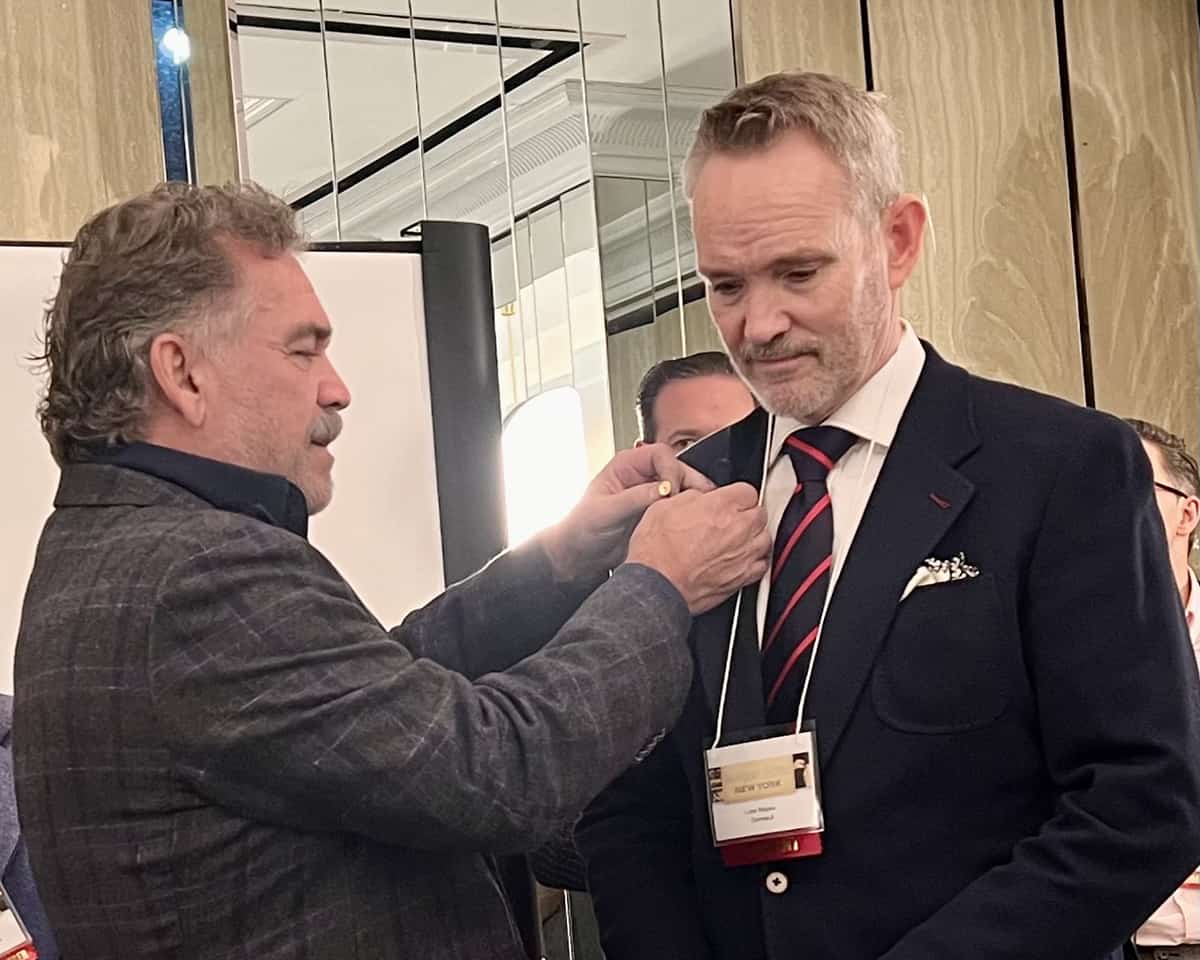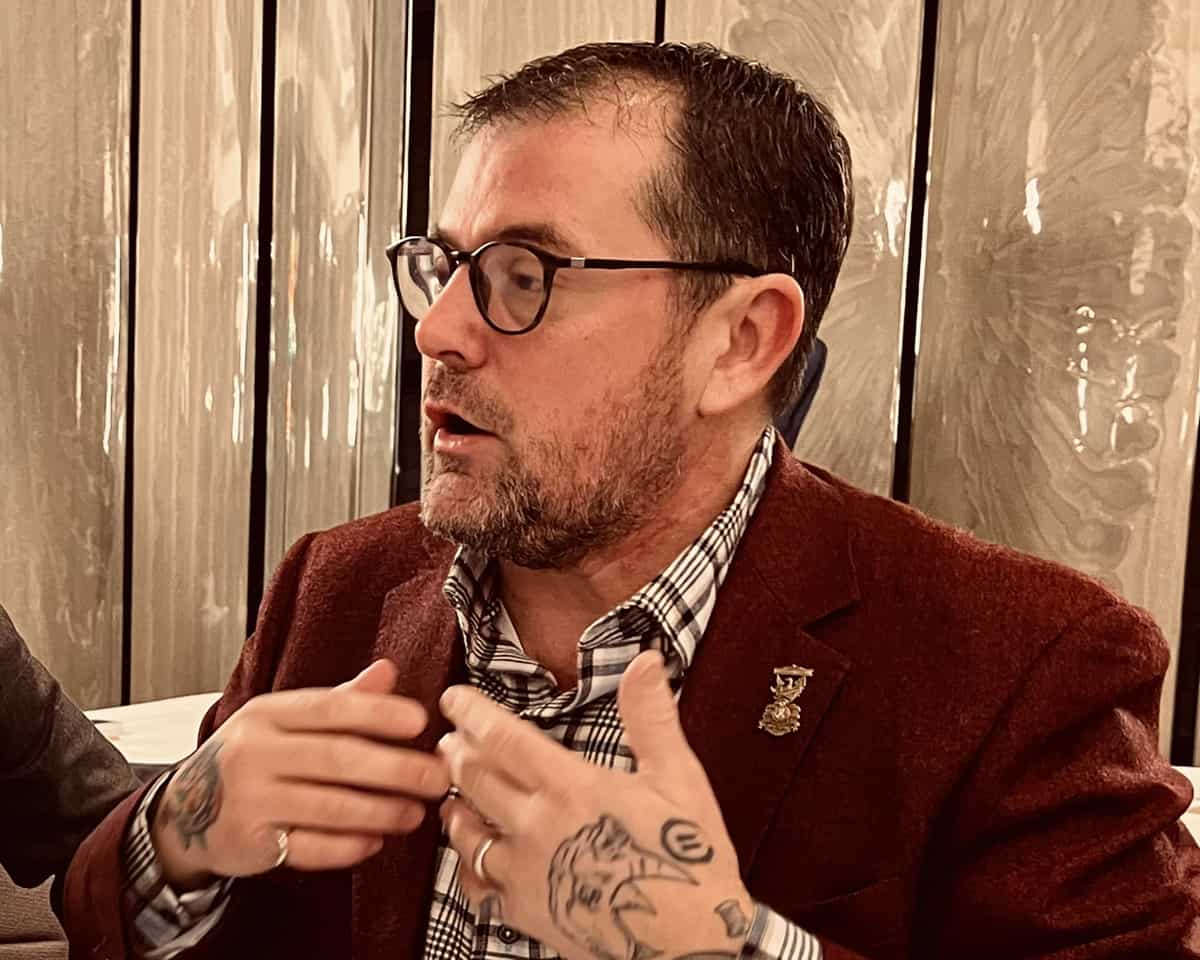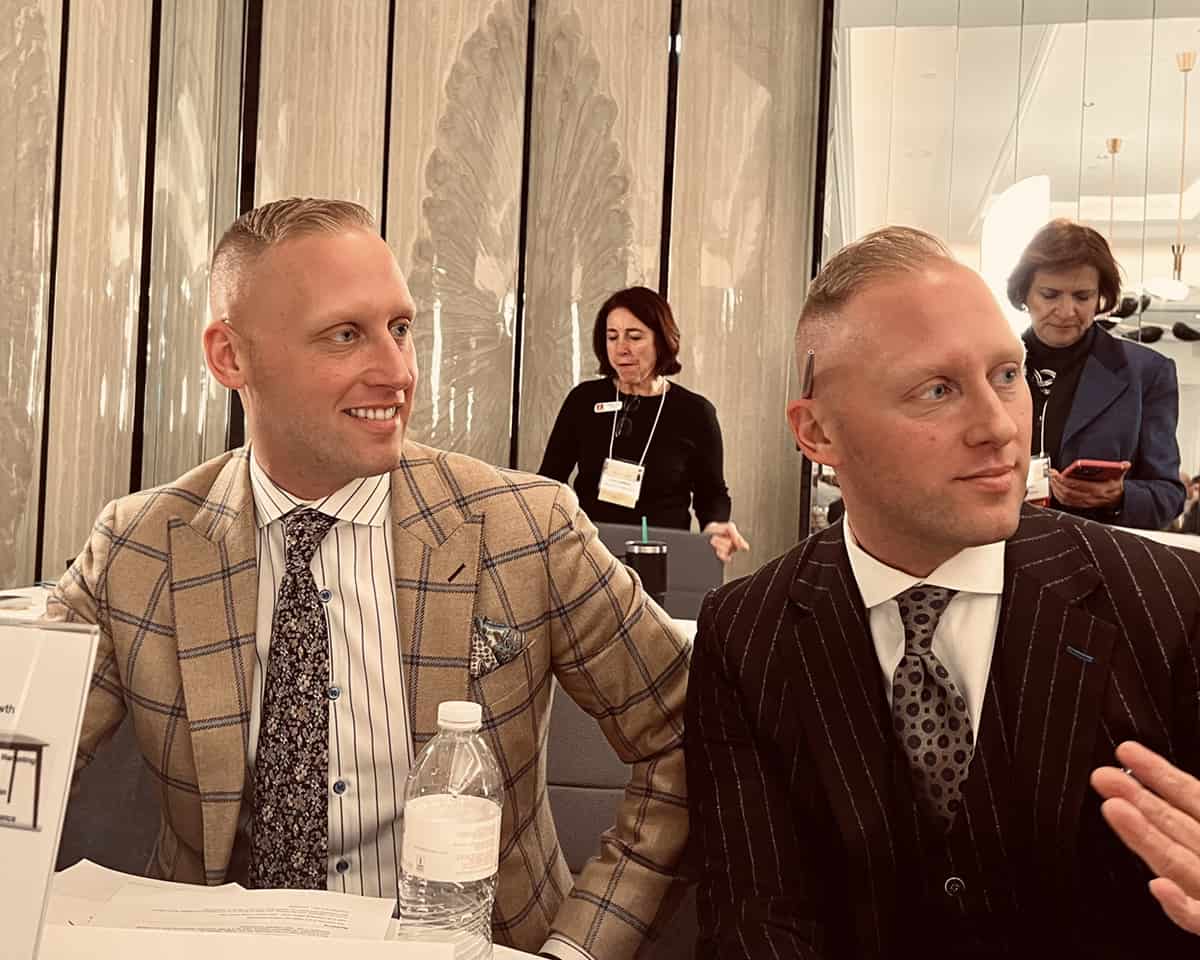CTDA PANEL: EXPERTS TALK CUSTOM CLOTHING

The CTDA (Custom Tailors and Designers Association) is the oldest trade organization in the industry, dating back to 1888. On Saturday, January 20th, after outgoing president Luke Mayes introduced incoming president Peter Roberti Jr, an innovative panel of clothing experts spoke to a packed room of clothiers, fabric makers, CMT specialists, and related professionals. Each spoke for ten minutes on specific topics, from shirtmaking, business planning, and creating a brand to communicating, scaling a business, and garment care. Here, a few takeaways from a truly informative evening.
Mitch Gambert, Mel Gambert Shirts (a custom shirtmaker in Newark NJ whose grandfather founded the business in 1933) spoke about fitting shirts into an overall sales process, pointing out that step one is knowing your customer’s needs: how/when/where the shirt will be worn. He talked about the seller’s responsibility to educate customers: that a fitted shirt is different from a well-fitting shirt, that the collar width should balance the width of the tie and suit lapel, that a 160s cotton might wrinkle within the hour while a 140s Sea Island cotton might last eight hours. He noted that the old rule of combining patterns (two patterns and a solid) has given way to less stringent dictates, but that the pattern should pull together the colors in the outfit. That said, he sees fewer (and smaller-scale) patterns out of European mills these days, with an emphasis on the classics.
Danny and Kenny King, King Brothers Clothiers, Minneapolis talked about successful business planning based on four pillars: understanding your market, attaining a sensible margin, effective management, and creative marketing. Knowing your market is essential and obvious; margin is less obvious. While a minimum markup is 50 percent (cost x markup= retail), custom clothiers should aim higher because they’re in a low volume business needing to factor in a worst-case scenario if the suit is not made correctly the first time. A markup of 2.5 or more is reasonable for custom clothing. One caveat: don’t price for where you are but for where you plan to be. Make these changes in your pricing now: “If we don’t enforce our margins, our customers are not going to enforce them for us.”
Marketing, though important, is less critical than margin. “Whatever marketing we do, we know only half of it will be successful. Since we never know which half, don’t stretch your budget here.” Two other tips: hire a good photographer for social media posts, and consider print ads in magazines, still the best vehicle for getting your message out via extended shelf life.
Angel Ramos, of his eponymous brand, spoke on the importance of authenticity and storytelling in creating brand identity. Companies that focus on simply creating a company rather than a brand are just selling a commodity. In addition to authenticity and storytelling, creating brand identity involves a unique combination of consistency and memorability. As an example, he cited the extra-long final buttonhole on Tom Ford suits and the coral pin that adorns Isaia’s suits/sportscoats. “I’d guess that 90 percent of Isaia customers leave the coral pin on the lapel. It identifies a brand that they are proud to wear.”
Other tips from Ramos: 1)Keep your social media posts about your brand, and separate from photos of family, friends, and food. 2) Yes, you want your reps to promote your brand but give them specific parameters. 3)To attain message consistency, be aware of color, typography, tone, and frequency. Remember that the more you say it, the more it becomes true.
Christopher White, America’s Best Cleaners, heads up a national association of certified cleaners. To warrant Couture Care certification (which qualified cleaning establishments can then post on their sites), the group takes random articles of clothing from each establishment and ranks them according to many factors: lighting, equipment maintenance, impressions, cleanliness, online reviews (which must be 4.8 or higher), etc. The association also sponsors development programs, training programs, educational workshops, and fashion events. They provide cleaners with printed material on how to care for your garments and answers to the most frequently asked questions: how often to dry clean suits (every 3-4 wearings), how to get rid of stains (right away), how often to launder shirts (after every wearing), how long will a good 100% cotton shirt last (it was 35 washings but now can be 50 or more if laundered correctly at the right temperature…)
Arnie Roberti, Adrian Jules, Rochester, NY, shared some tips about effective communication between retailers, clothing designers, and their CMT house. These include: 1. Educating yourself about the CMT house models; at Adrian Jules, these are slim-fit, medium (CEO fit), easy fit, portly, and athletic fit. 2. Understanding the CMT’s measuring system; good measuring is the key to success. 3. Take all the required measurements; use your eyes to determine shoulder slope, posture, and proportions. 4. Accurately fill out order form and review for completeness and legibility. Use your CMT house’s terminology. And 5. Use your CMT’s customer service team. Keep track of measurement/posture changes for improved fit of future garments.
Prediction: Digital measurements could well the future. Soon we’ll be building garments from photographs.
Vincent Theriault, SurMesur, 10 stores in Canada, spoke about how to scale a custom clothing business. Admitting that even after 12 years in the business, he does not consider himself an expert, he also acknowledged that the biggest challenge is finding the right people to represent the brand in 10 different locations. He believes that although marketing needs to be personal, the training needs to be consistent so that the message is consistent in all stores. The goal is to create a melting pot of knowledge so that employees share information across doors.
Relating a personal experience, Theriault admits that, on opening his first store, he was certain that he was the best seller and therefore the best employee. He soon learned that the secret to success is building a balanced team and that the best sellers (most personable, most passionate about clothing) are just part of the equation. Someone needs to be the most organized, the most detail-oriented, the best at measuring. A team with various skills that works together and shares information is the ultimate goal.
Theriault now believes in hiring better than yourself, and in building a team with different talents. In terms of compensation, he offers a team commission after reaching a target sales goal.















A wonderful story about a great CTDA event; what a great way to kick off a new year! Rock on CTDA and thank you MR!